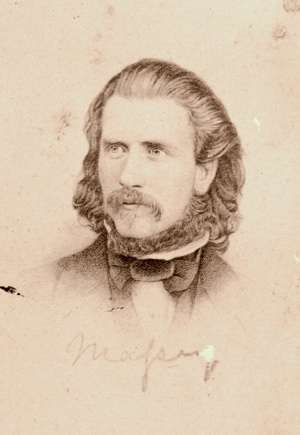It is best not to cast pearls before swine, so I will ignore the rest of Huller's irrelevant ignorant diatribe.Stephan Huller wrote: Hmmm. Deep breath.
Here is my response to Murdock's comments on the KRST theory, from http://www.booktalk.org/post96665.html#p96665
The extraordinary thing here is that Murdock personally had to work with nineteenth century sources in order to prove this Egyptian source for the word Christ as the anointed one. This says much about the politics of Christianity and Egyptology, and how heavily basic research has been suppressed and forgotten. The research summarized in Murdock's post above is faultless. The only problem with it is a political one - that it proves an Egyptian source for the myth of Christ, and people find this emotionally repugnant.
The argument that academic research follows a path of linear progress is sometimes used to suggest that work from before the Second World War should be ignored. This line completely fails to see the power of the Christian backlash against the scholars such as Massey who conducted a rigorous study of the theological implications of the discovery of the hieroglyphics. The backlash starts from an emotional commitment to the core Christian belief that the Gospels are historical. It then latches on to any small error by writers who criticize the dogma and amplifies that as some supposed proof that Jesus was real in order to discredit and intimidate the entire area of study. There is also a dominant racist white myth that Greece is the 'cradle of civilization'. This Western myth finds the discovery that Greek thought stood on the shoulders of much older human cultures from Egypt and Babylon to be politically unacceptable. So, even in the scientific study of how Christ is a myth, leading authors such as Earl Doherty stick to a Greco-Judaean framework that basically ignores Egypt.
Many readers here will not know how intensely Murdock is reviled by Christian apologists for her work on Egypt. This revulsion is emotional, cultural, dogmatic and ignorant. The proof given above that the idea of Christ as the anointed one exhibits strong continuity with Egyptian belief regarding Osiris seems innocuous at first glance, but it is an important component of contemporary efforts to re-base understanding of religion on science rather than authoritarian tradition. Dogmatists are incapable of examining their own presuppositions, and assume that wide agreement to a proposition, such as that Jesus Christ was a man, is evidence for its truth.
The evolution of human psychology is a fascinating and complex topic. Belief in Jesus Christ is central to dominant popular theories of human identity. Showing that the evolution of this belief is actually completely different from common assumptions assists to put the evolution of psychology into a scientific framework. In showing that Jesus Christ is no more or less real than Osiris and Horus, Murdock proves how easily people can be gulled into false belief.
Embodying the myths of Horus and Osiris in the story of Christ, despite the ongoing supernatural content, actually served to support the emerging materialist assumptions of the ancient West. Popular culture in the mixing societies of the Roman Empire responded to a new myth that brought the old myths together on earth. Christianity cleverly aligned itself with the emerging materialist view that historical evidence was central to truth, putting spiritual beliefs into a historical story. There was no evidence available for Jesus, but when evidence was manufactured in the novels of Mark and others, using Egyptian myth as a template, it caught on like wildfire.

